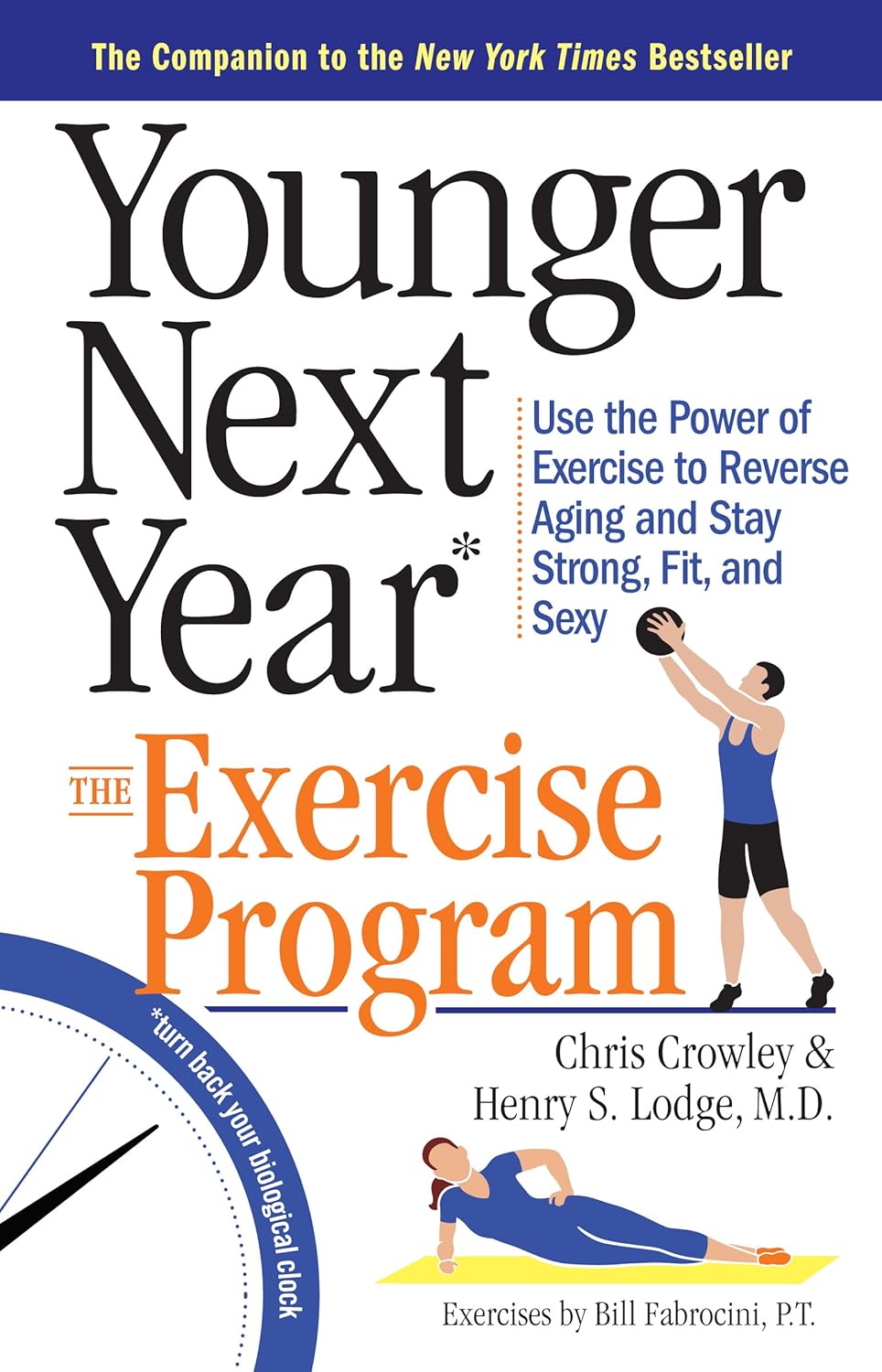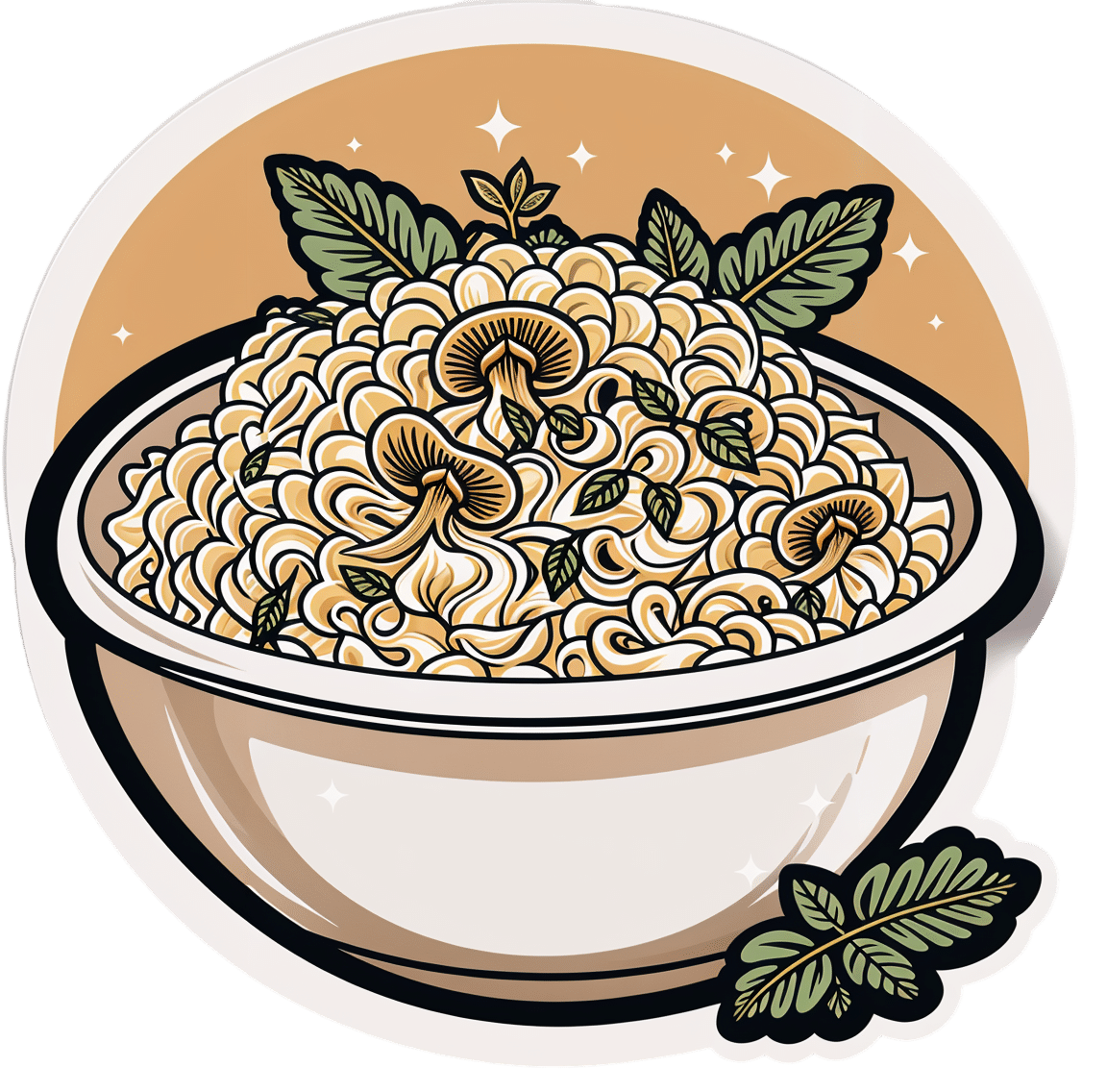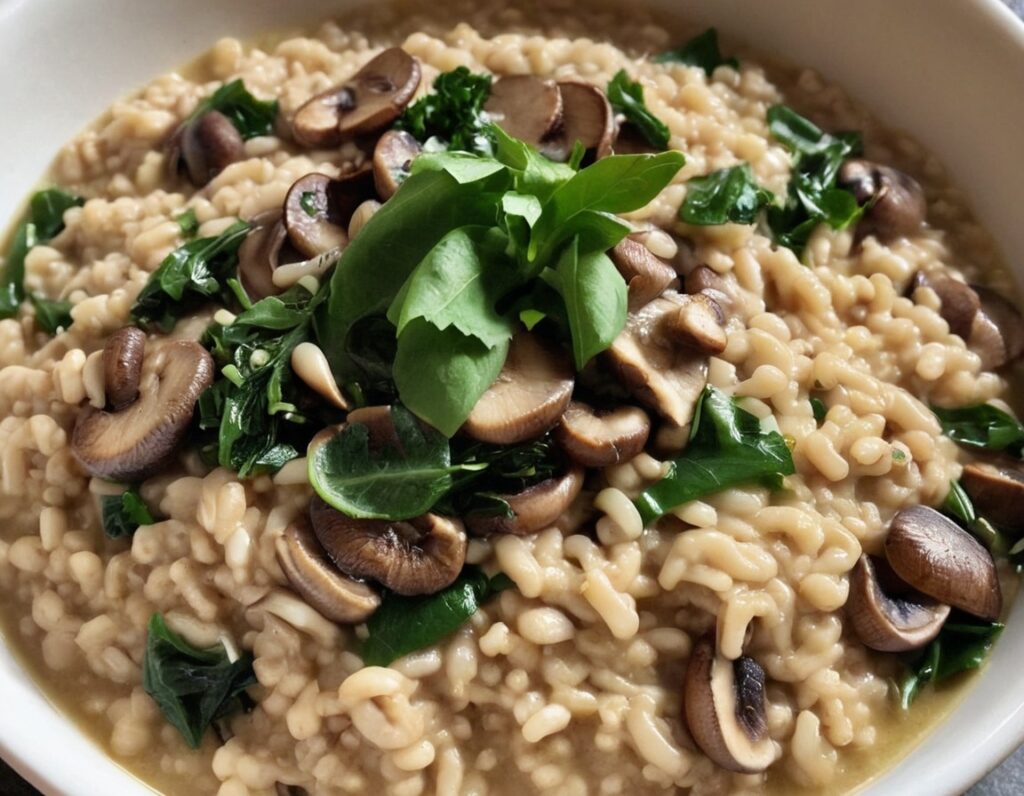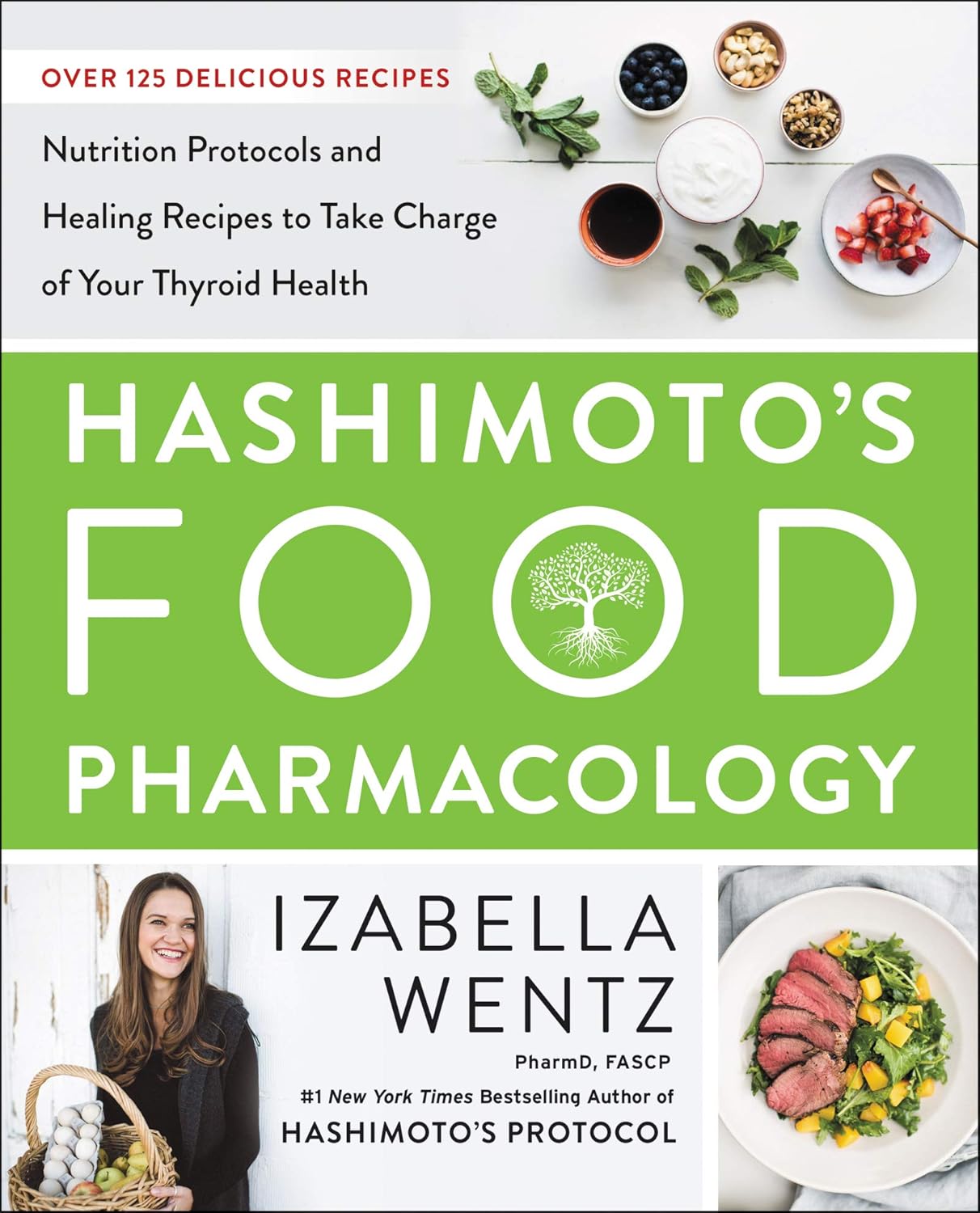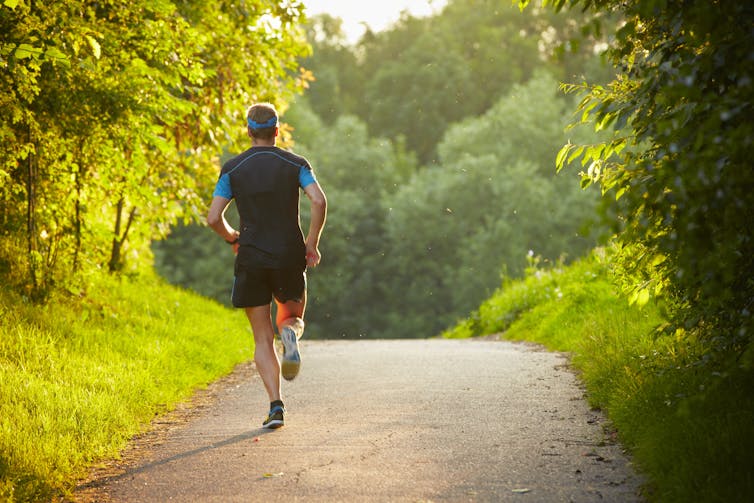
The Secret Easy Tips to Loosen Your Hips In 10 Minutes
10almonds is reader-supported. We may, at no cost to you, receive a portion of sales if you purchase a product through a link in this article.
Stiff hips can often cause discomfort, and ultimately back pain because of how one thing relies on the other as its seat. However, there are ways to improve it without taking years to get to where you want to be:
One bit at a time
Warm up and massage:
- Massage the front and back of the thighs to loosen tight muscles.
- Use your body weight for effective massaging.
- Relax and breathe slowly while massaging.
Vary your stretches:
- Perform a seated butterfly stretch, but avoid overexertion.
- Move knees gently within a comfortable range of motion.
- Perform stretches like placing one foot on the opposite knee or holding legs to open hips.
- Stretch the hips while lying on the floor with bent knees.
And now for the “magic move”: lie on your stomach, bend one knee, and gently rock to loosen hip stiffness.
Generally speaking, for most stretches one can usually stretch further on one side at once, than both at the same time. So, leverage this in your flexibility training, to get each side of your body accustomed to going that bit further. Then, when your body is comfortable with that, put it together.
For more on all of this plus visual demonstrations, enjoy:
Click Here If The Embedded Video Doesn’t Load Automatically!
Want to learn more?
You might also like:
How Tight Are Your Hips? Test (And Fix!) With This
Take care!
Don’t Forget…
Did you arrive here from our newsletter? Don’t forget to return to the email to continue learning!
Recommended
Learn to Age Gracefully
Join the 98k+ American women taking control of their health & aging with our 100% free (and fun!) daily emails:
-
Younger Next Year: The Exercise Program – by Chris Crowley & Dr. Henry Lodge
10almonds is reader-supported. We may, at no cost to you, receive a portion of sales if you purchase a product through a link in this article.
We previously reviewed the same authors’ original “Younger Next Year”, and now here’s the more specific book about exercise for increasing healthspan and reversing markers of biological aging, going into much more detail in that regard.
How much more? Well, it’s a very hand-holding book in the sense that it walks the reader through everything step-by-step, tells not only what kind of exercise and how much, but also how to do, what things to do to prepare, how to avoid not erring in various ways, what metrics to keep an eye on to ensure you are making progress, and more.
There are also whole sections on specific common age-related issues including osteoporosis and arthritis, as well as how to train around injuries (especially of the kind that basically aren’t likely to ever fully go away).
As with the previous book, there’s a blend of motivational pep talk and science—this book is heavily weighted towards the former. It has, however, enough science to keep it on the right track throughout. Hence the two authors! Crowley for motivational pep and training tips, and Dr. Lodge for the science.
Bottom line: if you’d like to be biologically younger next year, that exercise will be an important component of that, and this book is really quite comprehensive for its relative brevity (weighing in at 176 pages).
Click here to check out Younger Next Year: The Exercise Program, and make that progress!
Share This Post
-
Luxurious Longevity Risotto
10almonds is reader-supported. We may, at no cost to you, receive a portion of sales if you purchase a product through a link in this article.
Pearl barley is not only tasty and fiber-rich, but also, it contains propionic acid, which lowers cholesterol. The fiber content also lowers cholesterol too, of course, by the usual mechanism. The dish’s health benefits don’t end there, though; check out the science section at the end of the recipe!
You will need
- 2 cups pearl barley
- 3 cups sliced chestnut mushrooms
- 2 onions, finely chopped
- 6 large leaves collard greens, shredded
- ½ bulb garlic, finely chopped
- 8 spring onions, sliced
- 1½ quarts low-sodium vegetable stock
- 2 tbsp nutritional yeast
- 1 tbsp chia seeds
- 1 tbsp black pepper, coarse ground
- 1 tsp MSG or 2 tsp low-sodium salt
- 1 tsp rosemary
- 1 tsp thyme
- Extra virgin olive oil, for cooking
- Optional garnish: fresh basil leaves
Method
(we suggest you read everything at least once before doing anything)
1) Heat a little oil in a large sauté pan; add the onions and garlic and cook for 5 minutes; add the mushrooms and cook for another 5 minutes.
2) Add the pearl barley and a cup of the vegetable stock. Cook, stirring, until the liquid is nearly all absorbed, and add more stock every few minutes, as per any other risotto. You may or may not use all the stock you had ready. Pearl barley takes longer to cook than rice, so be patient—it’ll be worth the wait!
Alternative: an alternative is to use a slow cooker, adding a quart of the stock at once and coming back about 4 hours later—thus, it’ll take a lot longer, but will require minimal/no supervision.
3) When the pearl barley has softened, become pearl-like, and the dish is taking on a creamy texture, stir in the rest of the ingredients. Once the greens have softened, the dish is done, and it’s time to serve. Add the garnish if using one:
Enjoy!
Want to learn more?
For those interested in some of the science of what we have going on today:
- The Magic Of Mushrooms: “The Longevity Vitamin” (That’s Not A Vitamin)
- The Many Health Benefits Of Garlic
- Chia: The Tiniest Seeds With The Most Value
- Black Pepper’s Impressive Anti-Cancer Arsenal (And More)
- Monosodium Glutamate: Sinless Flavor-Enhancer Or Terrible Health Risk?
Take care!
Share This Post
-
The Good, The Bad, & The Vigorously Debated
10almonds is reader-supported. We may, at no cost to you, receive a portion of sales if you purchase a product through a link in this article.
This week in health news sees some pretty varied topics:
One more reason to care about the gut-brain axis
Stroke is a top killer in much of the industrialized world, usually making it into the top-few list on a per-country basis. And, it’s rising in prevalence, too. This is partly because our longevity is increasing so age-related things kill us more often, statistically, than age-unrelated things. But that’s only part of the reason; another is that our lifestyle (on the national level) is becoming more conducive to stroke. Diet is a large contributor to that, and gut health has now been identified as a key factor.
What recent research has shown is that minutes after a stroke occurs, normal gut anatomy is disrupted, and cells responsible for gut barrier integrity are eroded, and bugs from the gut get into the blood, and arrive at the (newly damaged) brain vasculature, where the blood-brain barrier is often also compromised on account of the stroke.
Because of this, critical to reducing post-stroke neuroinflammation (something that makes stroke damage more severe and recovery a lot harder) is improving the gut’s ability to heal itself quickly.
This can be helped with a dose of Insulin-like Growth Factor (IGF-1), but there are other things that can help or hinder, and those other things are modifiable by us as individuals in our lifestyle choices (e.g. a gut-healthy diet with plenty of fiber, and avoiding gut-unhealthy things like sugar and alcohol that feed C. albicans growths that will put roots through your intestines and make holes as they do), because the better/worse your gut barrier integrity is to start with, the easier/harder it will be for your gut to repair itself quickly:
Read in full: Healing the gut can reduce long-term impact of stroke
Related: Stop Sabotaging Your Gut
How about that seasonal lead-spiced hot drink?
Lead contamination in ground spices has become a bit of an issue, ground turmeric has had quite some flak in this regard, and now the spotlight is on cinnamon.
These reports, by the way, do not specify what kind of cinnamon (i.e. cassia vs Ceylon), however, clicking through to assorted sources and then doing our own digging finds that all cinnamon products we found listed as contaminated, were cassia cinnamon. This is unsurprising, as a) it’s cheaper b) it’s the kind most readily found on shelves in the US. That said, when it comes to Ceylon (sweet) cinnamon, absence of evidence is not evidence of absence, so that doesn’t mean they got the all-clear on lead contamination, but rather, that they haven’t received the same scrutiny as yet.
It’s worth noting that cinnamon sticks have been found to have less contamination than ground cinnamon, though.
It’s also worth noting that since some adulterated products have had lead added deliberately in increase the weight and darken the color, this is more likely to happen to cassia cinnamon than sweet cinnamon because cassia cinnamon is visibly darker, so adding a darkening agent to sweet cinnamon would just make it look like cassia (which no seller would want to do since cassia is the cheaper of the two).
Read in full: Why lead-tainted cinnamon products have turned up on shelves, and what questions consumers should ask
Related: Sweet Cinnamon vs Regular Cinnamon – Which is Healthier? ← this also covers toxicity issues, by the way
A matter of life and death
Assisted dying is currently legal in 10/40 US states, and Canada. Over in the UK, it’s being debated (and voted on) in Parliament today, at time of writing.
While bodily autonomy discussions are usually quite straightforward arguments between the very separate camps of
- “my body, my choice” vs
- “they shouldn’t be allowed to do that”,
…this one comes with a considerable middleground, because
- “people should have to right to end things without extra suffering and on their own terms”, and
- “many disabled people fear being placed in a position of having justify why they are not exercising their right to die when it might be cheaper and easier for others if they did”
…are positions with a lot of potential overlap.
In any case, we know most of our readers are in the US, but with a 10/40 split in US states (and some recent controversies in Canada), it’s likely a topic that’ll come up for most people at some point, so it’s good to understand it, and this is as good an opportunity as any:
Read in full: How would the assisted dying bill work and what issues might it create?
Related: Managing Your Mortality ← this talks about psychological/social considerations, as well as end-of-life care, palliative care (which is not quite the same thing!) and euthanasia in various forms, including the unofficial kind that you might want to be aware of if you want to avoid that happening.
Take care!
Share This Post
Related Posts
-
Hashimoto’s Food Pharmacology – by Dr. Izabella Wentz
10almonds is reader-supported. We may, at no cost to you, receive a portion of sales if you purchase a product through a link in this article.
The author is a doctor of pharmacology, and we’ve featured her before as an expert on Hashimoto’s, which she has. She has recommendations about specific blood tests and medications, but in this book she’s mainly focussing on what she calls the “three Rs” of managing hypothyroidism:
- Remove the causes and triggers of your hypothyroidism, so far as possible
- Repair the damage caused to your body, especially your gut
- Replace the thyroid hormones and related things in which your body has become deficient
To this end, she provides recipes that avoid processed meats and unfermented dairy, and include plenty of nutrient-dense whole foods specifically tailored to meet the nutritional needs of someone with hypothyroidism.
A nice bonus of the presentation of recipes (of which there are 125, if we include things like “mint tea” and “tomato sauce” and “hot lemon water” as recipes) is explaining the thyroid-supporting elements of each recipe.
A downside for some will be that if you are vegetarian/vegan, this book is very much not, and since many recipes are paleo-style meat dishes, substitutions will change the nutritional profile completely.
Bottom line: if you have hypothyroidism (especially if: Hashimoto’s) and like meat, this will be a great recipe book for you.
Click here to check out Hashimoto’s Food Pharmacology, and get cooking!
Don’t Forget…
Did you arrive here from our newsletter? Don’t forget to return to the email to continue learning!
Learn to Age Gracefully
Join the 98k+ American women taking control of their health & aging with our 100% free (and fun!) daily emails:
-
Stuck in fight-or-flight mode? 5 ways to complete the ‘stress cycle’ and avoid burnout or depression
10almonds is reader-supported. We may, at no cost to you, receive a portion of sales if you purchase a product through a link in this article.
Can you remember a time when you felt stressed leading up to a big life event and then afterwards felt like a weight had been lifted? This process – the ramping up of the stress response and then feeling this settle back down – shows completion of the “stress cycle”.
Some stress in daily life is unavoidable. But remaining stressed is unhealthy. Chronic stress increases chronic health conditions, including heart disease and stroke and diabetes. It can also lead to burnout or depression.
Exercise, cognitive, creative, social and self-soothing activities help us process stress in healthier ways and complete the stress cycle.
What does the stress cycle look like?
Scientists and researchers refer to the “stress response”, often with a focus on the fight-or-flight reactions. The phrase the “stress cycle” has been made popular by self-help experts but it does have a scientific basis.
The stress cycle is our body’s response to a stressful event, whether real or perceived, physical or psychological. It could be being chased by a vicious dog, an upcoming exam or a difficult conversation.
The stress cycle has three stages:
- stage 1 is perceiving the threat
- stage 2 is the fight-or-flight response, driven by our stress hormones: adrenaline and cortisol
- stage 3 is relief, including physiological and psychological relief. This completes the stress cycle.
Different people will respond to stress differently based on their life experiences and genetics.
Unfortunately, many people experience multiple and ongoing stressors out of their control, including the cost-of-living crisis, extreme weather events and domestic violence.
Remaining in stage 2 (the flight-or-flight response), can lead to chronic stress. Chronic stress and high cortisol can increase inflammation, which damages our brain and other organs.
When you are stuck in chronic fight-or-flight mode, you don’t think clearly and are more easily distracted. Activities that provide temporary pleasure, such as eating junk food or drinking alcohol are unhelpful strategies that do not reduce the stress effects on our brain and body. Scrolling through social media is also not an effective way to complete the stress cycle. In fact, this is associated with an increased stress response.
Stress and the brain
In the brain, chronic high cortisol can shrink the hippocampus. This can impair a person’s memory and their capacity to think and concentrate.
Chronic high cortisol also reduces activity in the prefrontal cortex but increases activity in the amygdala.
The prefrontal cortex is responsible for higher-order control of our thoughts, behaviours and emotions, and is goal-directed and rational. The amygdala is involved in reflexive and emotional responses. Higher amygdala activity and lower prefrontal cortex activity explains why we are less rational and more emotional and reactive when we are stressed.
There are five types of activities that can help our brains complete the stress cycle. https://www.youtube.com/embed/eD1wliuHxHI?wmode=transparent&start=0 It can help to understand how the brain encounters stress.
1. Exercise – its own complete stress cycle
When we exercise we get a short-term spike in cortisol, followed by a healthy reduction in cortisol and adrenaline.
Exercise also increases endorphins and serotonin, which improve mood. Endorphins cause an elated feeling often called “runner’s high” and have anti-inflammatory effects.
When you exercise, there is more blood flow to the brain and higher activity in the prefrontal cortex. This is why you can often think more clearly after a walk or run. Exercise can be a helpful way to relieve feelings of stress.
Exercise can also increase the volume of the hippocampus. This is linked to better short-term and long-term memory processing, as well as reduced stress, depression and anxiety.
2. Cognitive activities – reduce negative thinking
Overly negative thinking can trigger or extend the stress response. In our 2019 research, we found the relationship between stress and cortisol was stronger in people with more negative thinking.
Higher amygdala activity and less rational thinking when you are stressed can lead to distorted thinking such as focusing on negatives and rigid “black-and-white” thinking.
Activities to reduce negative thinking and promote a more realistic view can reduce the stress response. In clinical settings this is usually called cognitive behaviour therapy.
At home, this could be journalling or writing down worries. This engages the logical and rational parts of our brain and helps us think more realistically. Finding evidence to challenge negative thoughts (“I’ve prepared well for the exam, so I can do my best”) can help to complete the stress cycle.
Journalling could help process stressful events and complete the stress cycle. Shutterstock/Fellers Photography 3. Getting creative – a pathway out of ‘flight or fight’
Creative activities can be art, craft, gardening, cooking or other activities such as doing a puzzle, juggling, music, theatre, dancing or simply being absorbed in enjoyable work.
Such pursuits increase prefrontal cortex activity and promote flow and focus.
Flow is a state of full engagement in an activity you enjoy. It lowers high-stress levels of noradrenaline, the brain’s adrenaline. When you are focussed like this, the brain only processes information relevant to the task and ignores non-relevant information, including stresses.
4. Getting social and releasing feel-good hormones
Talking with someone else, physical affection with a person or pet and laughing can all increase oxytocin. This is a chemical messenger in the brain that increases social bonding and makes us feel connected and safe.
Laughing is also a social activity that activates parts of the limbic system – the part of the brain involved in emotional and behavioural responses. This increases endorphins and serotonin and improves our mood.
5. Self-soothing
Breathing exercises and meditation stimulate the parasympathetic nervous system (which calms down our stress responses so we can “reset”) via the vagus nerves, and reduce cortisol.
A good cry can help too by releasing stress energy and increasing oxytocin and endorphins.
Emotional tears also remove cortisol and the hormone prolactin from the body. Our prior research showed cortisol and prolactin were associated with depression, anxiety and hostility.
Getting moving can help with stress and its effects on the brain. Shutterstock/Jaromir Chalabala Action beats distraction
Whether it’s watching a funny or sad movie, exercising, journalling, gardening or doing a puzzle, there is science behind why you should complete the stress cycle.
Doing at least one positive activity every day can also reduce our baseline stress level and is beneficial for good mental health and wellbeing.
Importantly, chronic stress and burnout can also indicate the need for change, such as in our workplaces. However, not all stressful circumstances can be easily changed. Remember help is always available.
If you have concerns about your stress or health, please talk to a doctor.
If this article has raised issues for you, or if you’re concerned about someone you know, call Lifeline on 13 11 14 or Kids Helpline on 1800 55 1800.
Theresa Larkin, Associate professor of Medical Sciences, University of Wollongong and Susan J. Thomas, Associate professor in Mental Health and Behavioural Science, University of Wollongong
This article is republished from The Conversation under a Creative Commons license. Read the original article.
Don’t Forget…
Did you arrive here from our newsletter? Don’t forget to return to the email to continue learning!
Learn to Age Gracefully
Join the 98k+ American women taking control of their health & aging with our 100% free (and fun!) daily emails:
-
Unlock Your Air-Fryer’s Potential!
10almonds is reader-supported. We may, at no cost to you, receive a portion of sales if you purchase a product through a link in this article.
Unlock Your Air-Fryer’s Potential!
You know what they say:
“you get out of it what you put in”
…and in the case of an air-fryer, that’s very true!
More seriously:
A lot of people buy an air fryer for its health benefits and convenience, make fries a couple of times, and then mostly let it gather dust. But for those who want to unlock its potential, there’s plenty more it can do!
Let’s go over the basics first…
Isn’t it just a tiny convection oven?
Mechanically, yes. But the reason that it can be used to “air-fry” food rather than merely bake or roast the food is because of its tiny size allowing for much more rapid cooking at high temperatures.
On which note… If you’re shopping for an air-fryer:
- First of all, congratulations! You’re going to love it.
- Secondly: bigger is not better. If you go over more than about 4 liters capacity, then you don’t have an air-fryer; you have a convection oven. Which is great and all, but probably not what you wanted.
Are there health benefits beyond using less oil?
It also creates much less acrylamide than deep-frying starchy foods does. The jury is out on the health risks of acrylamide, but we can say with confidence: it’s not exactly a health food.
I tried it, but the food doesn’t cook or just burns!
The usual reason for this is either over-packing the fryer compartment (air needs to be able to circulate!), or not coating the contents in oil. The oil only needs to be a super-thin layer, but it does need to be there, or else again, you’re just baking things.
Two ways to get a super thin layer of oil on your food:
- (works for anything you can air-fry) spray the food with oil. You can buy spray-on oils at the grocery store (Fry-light and similar brands are great), or put oil in little spray bottle (of the kind that you might buy for haircare) yourself.
- (works with anything that can be shaken vigorously without harming it, e.g. root vegetables) chop the food, and put it in a tub (or a pan with a lid) with about a tablespoon of olive oil. Don’t worry if that looks like it’s not nearly enough—it will be! Now’s a great time to add your seasonings* too, by the way. Put the lid on, and holding the lid firmly in place, shake the tub/pan/whatever vigorously. Open it, and you’ll find the oil has now distributed itself into a very thin layer all over the food.
*About those seasonings…
Obviously not everything will go with everything, but some very healthful seasonings to consider adding are:
- Garlic minced/granules/powder (great for the heart and immune health)
- Black pepper (boosts absorption of other nutrients, and provides more benefits of its own than we can list here)
- Turmeric (slows aging and has anti-cancer properties)
- Cinnamon (great for the heart and has anti-inflammatory properties)
Garlic and black pepper can go with almost anything (and in this writer’s house, they usually do!)
Turmeric has a sweet nutty taste, and will add its color anything it touches. So if you want beautiful golden fries, perfect! If you don’t want yellow eggplant, maybe skip it.
Cinnamon is, of course, great as part of breakfast and dessert dishes
On which note, things most people don’t think of air-frying:
- Breakfast frittata—the healthy way!
- Omelets—no more accidental scrambled egg and you don’t have to babysit it! Just take out the tray that things normally sit on, and build it directly onto the (spray-oiled) bottom of the air-fryer pan. If you’re worried it’ll burn: a) it won’t, because the heat is coming from above, not below b) you can always use greaseproof paper or even a small heatproof plate
- French toast—again with no cooking skills required
- Fish cakes—make the patties as normal, spray-oil and lightly bread them
- Cauliflower bites—spray oil or do the pan-jiggle we described; for seasonings, we recommend adding smoked paprika and, if you like heat, your preferred kind of hot pepper! These are delicious, and an amazing healthy snack that feels like junk food.
- Falafel—make the balls as usual, spray-oil (do not jiggle violently; they won’t have the structural integrity for that) and air-fry!
- Calamari (vegan option: onion rings!)—cut the squid (or onions) into rings, and lightly coat in batter and refrigerate for about an hour before air-frying at the highest heat your fryer does. This is critical, because air-fryers don’t like wet things, and if you don’t refrigerate it and then use a high heat, the batter will just drip, and you don’t want that. But with those two tips, it’ll work just great.
Want more ideas?
Check out EatingWell’s 65+ Healthy Air-Fryer Recipes ← the recipes are right there, no need to fight one’s way to them in any fashion!
Don’t Forget…
Did you arrive here from our newsletter? Don’t forget to return to the email to continue learning!
Learn to Age Gracefully
Join the 98k+ American women taking control of their health & aging with our 100% free (and fun!) daily emails:


